Dacia Spring vs MG ZS – Differences & prices compared
Compare performance, boot space, consumption and price in one view.
Find out now: which car is the better choice for you – Dacia Spring or MG ZS?
The Dacia Spring (SUV) comes with a Electric engine and Automatic transmission. In comparison, the MG ZS (SUV) features a Full Hybrid or Petrol engine with Automatic or Manuel transmission.
When it comes to boot capacity, the Dacia Spring offers 308 L, while the MG ZS provides 443 L – depending on how much space you need. If you’re looking for more power, decide whether the 65 HP of the Dacia Spring or the 197 HP of the MG ZS suits your needs better.
In terms of consumption, the values are 13.20 kWh per 100 km for the Dacia Spring, and 5 L for the MG ZS.
Price-wise, the Dacia Spring starts at 14500 £, while the MG ZS is available from 18000 £. Compare all the details and find out which model fits your lifestyle best!
Dacia Spring
The Dacia Spring stands out as an affordable and environmentally friendly option in the electric vehicle market, combining practicality with a compact design ideal for urban settings. Its minimalist interior, while basic, provides all the essential features needed for a comfortable drive, reflecting its cost-effective approach. The vehicle's performance suits city driving, making it an appealing choice for those seeking an entry-level electric car.
details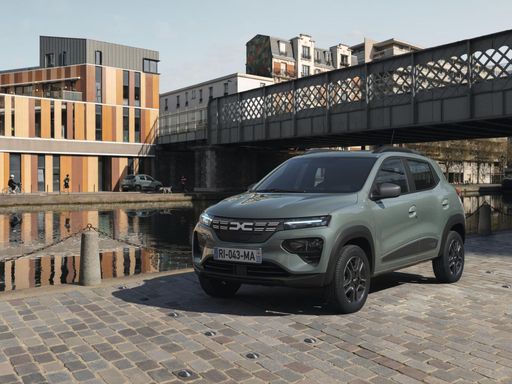 @ dacia-presse.de
@ dacia-presse.de
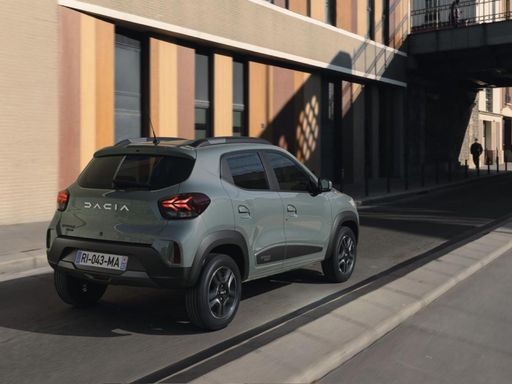 @ dacia-presse.de
@ dacia-presse.de
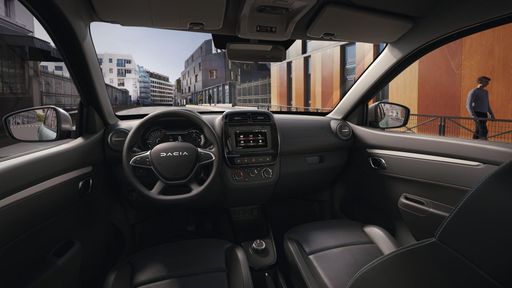 @ dacia-presse.de
@ dacia-presse.de
MG ZS
The MG ZS presents itself as a practical and stylish compact SUV, ideal for those seeking comfort and functionality at an affordable price. With its spacious interior and modern design, it caters to both family and solo adventures, providing ample storage space and user-friendly technology. Additionally, the vehicle's efficient performance and refined drive make it a compelling choice for urban and motorway journeys alike.
details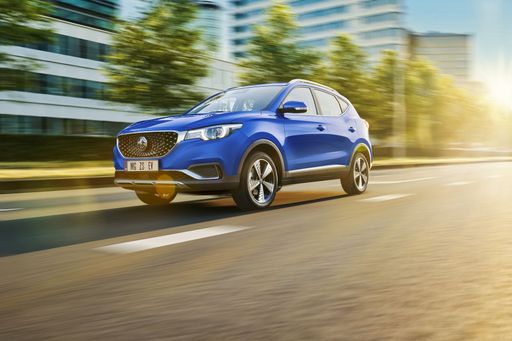 @ news.mgmotor.eu
@ news.mgmotor.eu
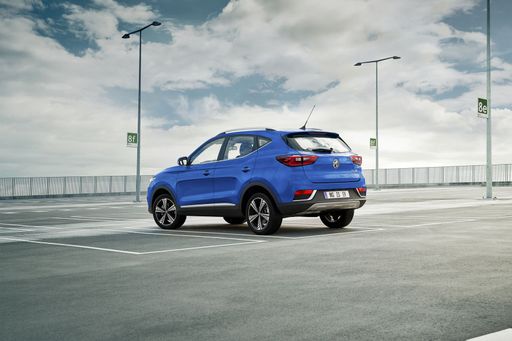 @ news.mgmotor.eu
@ news.mgmotor.eu
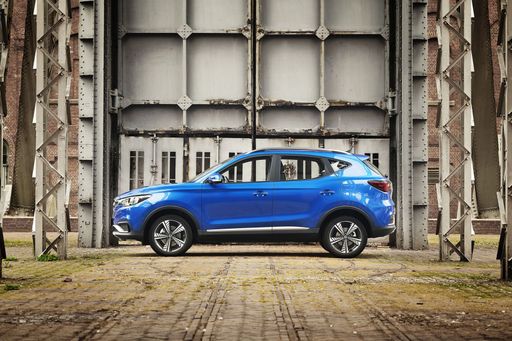 @ news.mgmotor.eu
@ news.mgmotor.eu
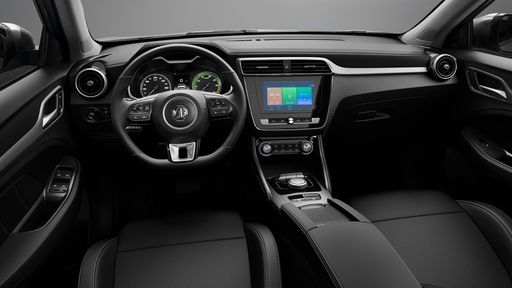 @ news.mgmotor.eu
@ news.mgmotor.eu
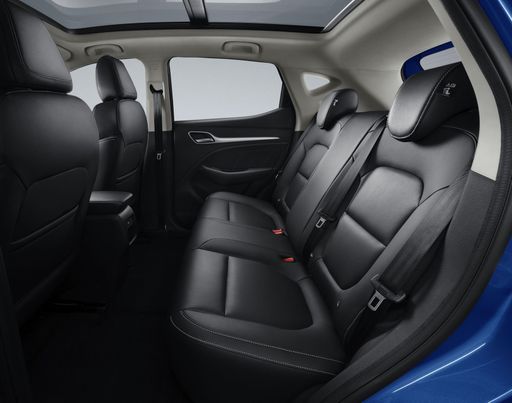 @ news.mgmotor.eu
@ news.mgmotor.eu

|

|
|
|
|
Costs and Consumption |
|
|---|---|
|
Price
14500 - 17100 £
|
Price
18000 - 23100 £
|
|
Consumption L/100km
-
|
Consumption L/100km
5 - 6.5 L
|
|
Consumption kWh/100km
13.2 - 14.1 kWh
|
Consumption kWh/100km
-
|
|
Electric Range
225 - 228 km
|
Electric Range
-
|
|
Battery Capacity
26.80 kWh
|
Battery Capacity
-
|
|
co2
0 g/km
|
co2
113 - 145 g/km
|
|
Fuel tank capacity
-
|
Fuel tank capacity
41 - 55 L
|
Dimensions and Body |
|
|---|---|
|
Body Type
SUV
|
Body Type
SUV
|
|
Seats
4
|
Seats
5
|
|
Doors
5
|
Doors
5
|
|
Curb weight
1013 - 1050 kg
|
Curb weight
1330 - 1420 kg
|
|
Trunk capacity
308 L
|
Trunk capacity
443 L
|
|
Length
3701 mm
|
Length
4430 mm
|
|
Width
1583 mm
|
Width
1818 mm
|
|
Height
1519 mm
|
Height
1635 mm
|
|
Payload
265 - 302 kg
|
Payload
375 - 470 kg
|
Engine and Performance |
|
|---|---|
|
Engine Type
Electric
|
Engine Type
Full Hybrid, Petrol
|
|
Transmission
Automatic
|
Transmission
Automatic, Manuel
|
|
Transmission Detail
-
|
Transmission Detail
Automatic Gearbox, Manual Gearbox
|
|
Drive Type
Front-Wheel Drive
|
Drive Type
Front-Wheel Drive
|
|
Power HP
44 - 65 HP
|
Power HP
116 - 197 HP
|
|
Acceleration 0-100km/h
13.7 - 19.1 s
|
Acceleration 0-100km/h
8.7 - 12.5 s
|
|
Max Speed
125 km/h
|
Max Speed
168 - 179 km/h
|
|
Torque
113 - 125 Nm
|
Torque
148 Nm
|
|
Number of Cylinders
-
|
Number of Cylinders
4
|
|
Power kW
33 - 48 kW
|
Power kW
85 - 145 kW
|
|
Engine capacity
-
|
Engine capacity
1495 - 1498 cm3
|
General |
|
|---|---|
|
Model Year
2024
|
Model Year
2024 - 2025
|
|
CO2 Efficiency Class
A
|
CO2 Efficiency Class
C, E
|
|
Brand
Dacia
|
Brand
MG
|
Dacia Spring
The Revolution of Affordable Electric Mobility: The Dacia Spring
The automotive world has witnessed remarkable advancements in electric vehicles (EVs), with the Dacia Spring emerging as a noteworthy contender in the affordable segment. Combining efficiency, affordability, and practicality, the Spring offers an intriguing prospect for eco-conscious individuals and city dwellers alike.
Powertrain and Performance: A Look Under the Hood
The Dacia Spring is equipped with an electric motor that delivers between 44 to 65 PS, translating into a versatile driving experience tailored to urban landscapes. It operates on a front-wheel-drive system, ensuring a familiar and manageable handling experience.
Dacia Spring's electric engine is paired with an automatic transmission, utilising a reduction gearbox. This setup allows for smooth acceleration and a top speed of 125 km/h, ensuring that everyday driving scenarios are handled with ease.
Efficiency and Range: Eco-Friendly without Compromise
Efficiency is a cornerstone of the Dacia Spring's design, boasting an energy consumption of just 13.2 to 14.1 kWh per 100 km. When fully charged, its 26.8 kWh battery offers a respectable range of 225 to 228 km, making it ideal for daily commutes and short trips.
Furthermore, the Spring takes pride in its commendable CO2-efficiency class A, emphasising its commitment to reducing environmental footprint with a zero-emission profile.
Design and Practicality: Compact yet Comprehensive
Lying in the SUV category, the Dacia Spring is compact with dimensions of 3701 mm in length and 1583 mm in width, making it a perfect match for urban environments where space is at a premium. Despite its modest size, it provides a generous boot space of 308 litres, ensuring practicality isn’t sacrificed.
Comfort and Interior: For the Everyday Journey
The Dacia Spring comfortably seats up to four passengers. The cabin offers a minimalist yet functional design, available in multiple trim lines including Essential, Expression, and Extreme, allowing customers to choose according to their taste and requirement.
With its ergonomic layout and simplicity, the interior is crafted to enhance the driving experience by focusing on essential needs, avoiding unnecessary distractions.
Affordability and Accessibility: Breaking Barrier
The Dacia Spring stands out in the electric vehicle market due to its affordability, with prices ranging from 16,900 to 19,900 €. This ensures that environmentally friendly transportation is accessible to a broader audience.
Additionally, the Spring allows for cost-effective maintenance and operational expenses, offering monthly running costs between 570 to 599 € and cost per km between 22.8 to 24 cents, making it an economical choice in the long run.
Final Thoughts: The Future of Urban Mobility
In summary, the Dacia Spring serves as a testament to how electric vehicles can be both affordable and practical, without compromising on essential features. Whether it is for the eco-conscious urbanite or those looking for a cost-effective daily driver, the Spring is positioned as a viable solution for navigating the future of urban mobility.
MG ZS
Introducing the MG ZS: A Fusion of Style and Innovation
The MG ZS represents a seamless blend of contemporary design, advanced technology, and practicality. Designed to appeal to a wide audience, this SUV offers something for everyone, whether you opt for a petrol engine or embrace electric mobility. In this article, we’ll delve into the key technical details and innovative features that define the MG ZS.
Engine Options: Petrol and Electric Variants
The MG ZS stands out with its diverse engine offerings. Petrol variants range from 106 PS to 111 PS, with impressive fuel efficiency between 6.6 and 7.2 L/100 km. For those looking towards the future, the electric versions provide a cutting-edge alternative with power outputs of 156 PS and 178 PS. These electric models boast an impressive range of up to 440 km, thanks to their significant battery capacities ranging from 49.3 to 65.7 kWh, while consuming between 17.3 and 17.8 kWh/100 km.
Performance and Efficiency: Meeting Modern Demands
The MG ZS's performance is commendable, featuring a top speed ranging from 175 to 180 km/h and acceleration from 0 to 100 km/h in just 8.6 to 12.4 seconds. The Torque varies from 141 to 280 Nm, providing adequate punch for both urban and highway driving. It’s worth noting the various available gearboxes, including manual and automatic options, offering drivers a tailored experience.
Eco-Conscious Driving: CO2 Emissions and Efficiency
With an increasing emphasis on environmental impact, the MG ZS offers a range of CO2 efficiency classes from E to A, catering to environmentally conscious drivers. The electric models, with zero tailpipe emissions, underscore MG's commitment to sustainable transport solutions.
Practicality and Interior Comfort
Beyond its engines, the MG ZS provides practicality with a spacious 448-litre boot and a generous loading capacity of up to 490 kg. The vehicle comfortably seats five passengers within its dimensions (4323 mm in length, 1809 mm in width, and 1653 mm in height), providing ample legroom and headroom. Moreover, specific models come in luxury and comfort trims, ensuring a plush ride.
Conclusion: A Well-Balanced Offering
In conclusion, the MG ZS stands as a versatile SUV that expertly marries style, performance, and innovation. With its competitive pricing starting from €17,990 up to €39,990 and monthly costs ranging from €714 to €775, the MG ZS presents an attractive proposition for various customer demographics. Whether opting for petrol or electric, the MG ZS remains poised to meet the diverse needs of modern drivers looking for efficiency and sophistication in equal measure.
Is the Dacia Spring offered with different drivetrains?
Available configurations include Front-Wheel Drive.
The prices and data displayed are estimates based on German list prices and may vary by country. This information is not legally binding.
